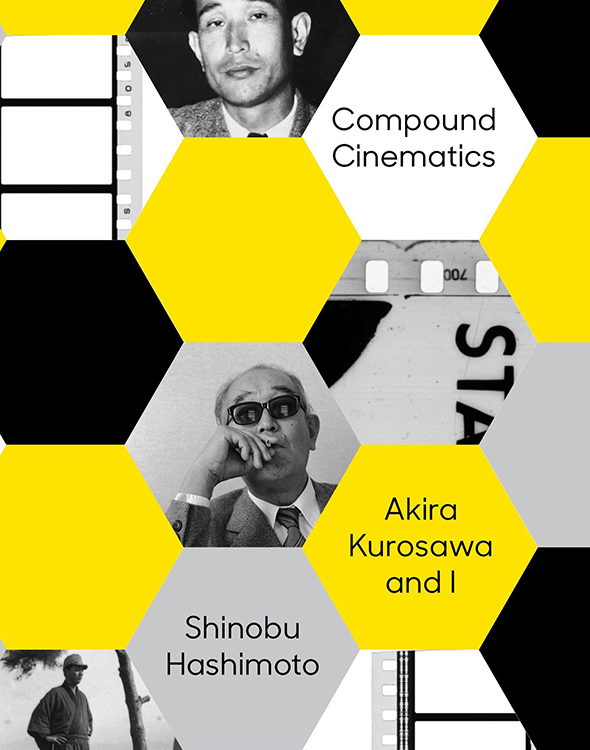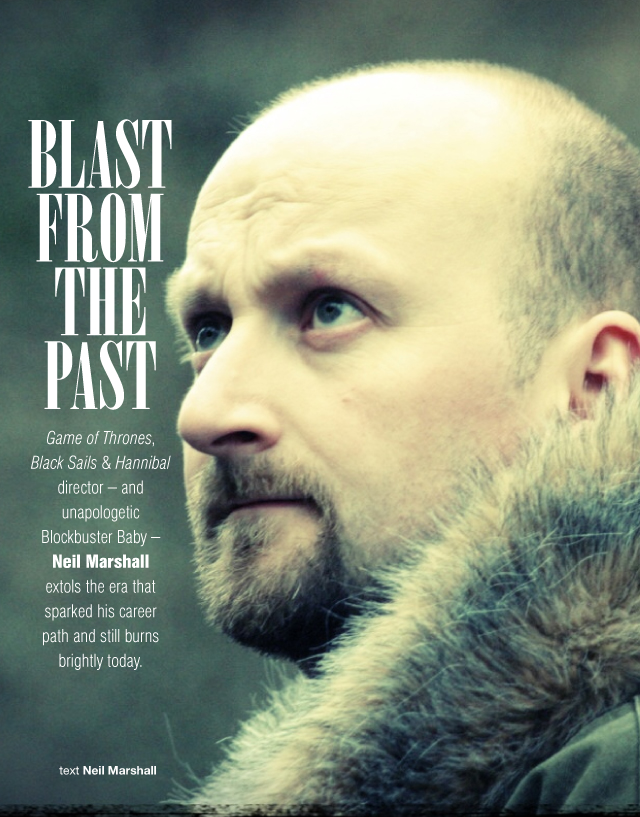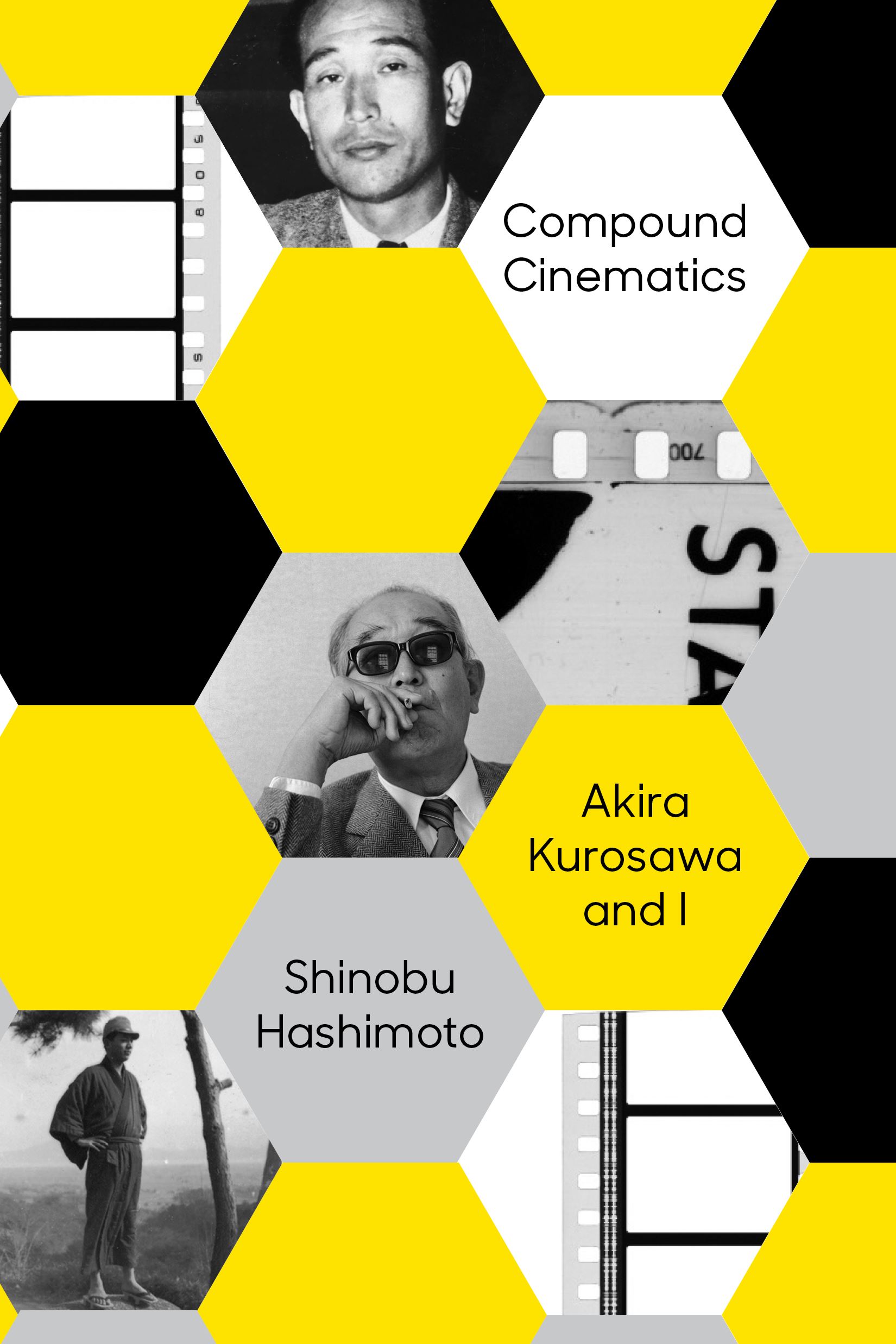
SEVEN SAMURAI II
Mr. Kurosawa had a philosophy about scenarios.
“You cannot rest even for a day.”
According to him, the work of writing a script was like running a full marathon. You had to keep your chin down and your gaze lowered, fixed on a point just ahead, as you silently ran. If you didn’t look up and continued to do nothing but run, you eventually reached your goal.
The average daily output of Team Kurosawa was fifteen sheets. We might be seated for the same seven hours from ten in the morning until five in the afternoon, but sometimes we did just five or seven pages, while on other days we’d hit a groove and get out more than twenty or thirty pages, for an average of about fifteen. So if we shut ourselves away for three weeks, or twenty days of actual work, we could finish a screenplay of three hundred pages or so.
Mr. Kurosawa liked Noh theater, and when the day’s work was done he would often talk about Noh over dinner, and he always spoke of Zeami. A historical figure of the Muromachi era who enjoyed the backing and patronage of the Ashikaga shogun, Zeami produced numerous masterpieces and established Noh as an artform continuing to the present. One day, as this Zeami crossed a river on a boat, at about the midway point another boat came from the opposite bank, and the ferrymen called out to each other: Oh, the weather’s good. Mm, I’m glad for the good weather, but I’m tired out today. Huh, why?
Well, because I took a day off from work yesterday.
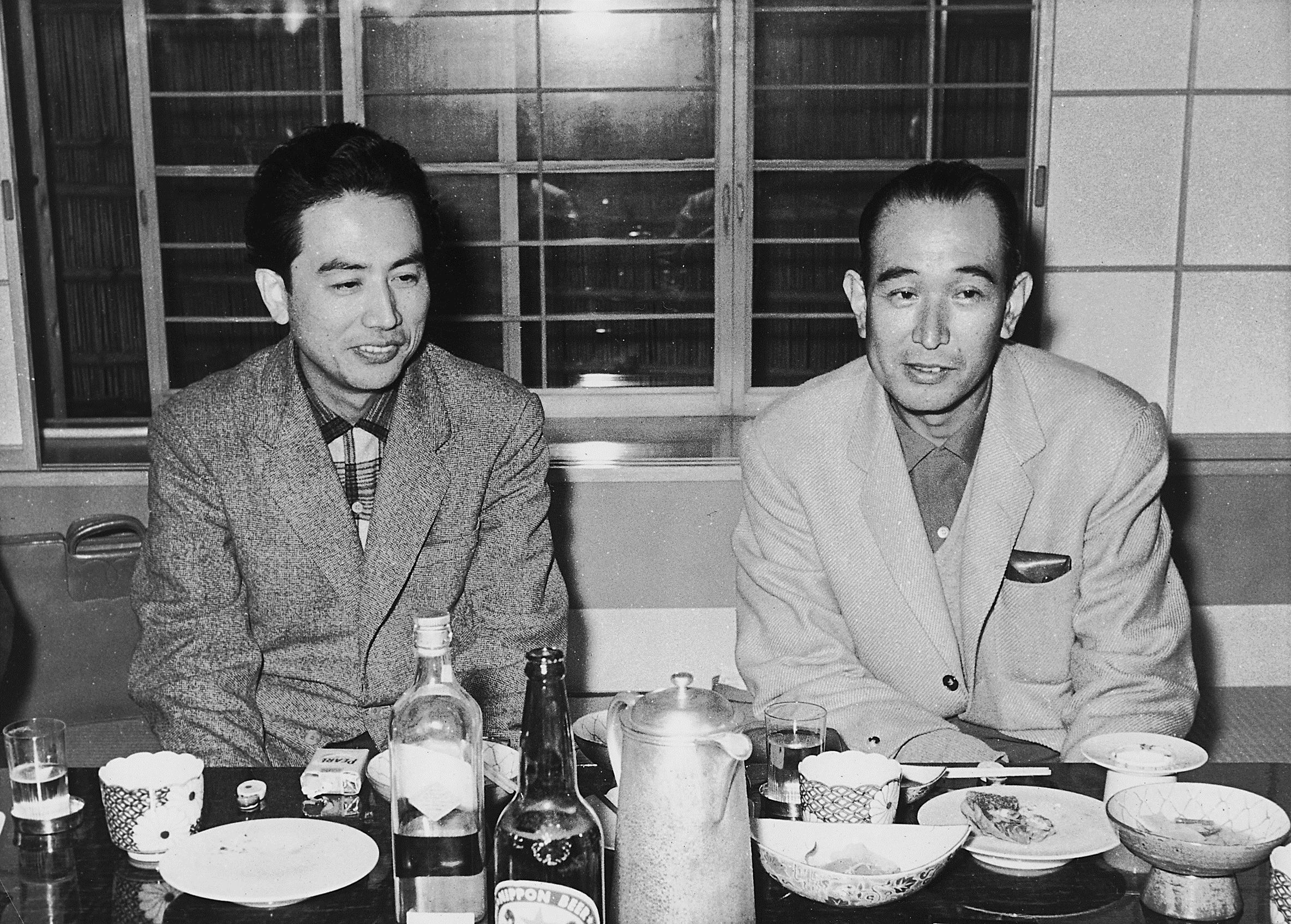
Shinobu Hashimoto & Akira Kurosawa circa 1960
Zeami could not but slap his knee. That was it! That was the trick, if you rested your body you just ended up feeling tired. When it came to practice, you could not rest even for a day.
Just as Mr. Kurosawa said, scenarios were like running a marathon, and looking ahead because it was too much led to discouragement, the end… I understood in my heart that, even when things were painful, keeping your head down and persevering was the only way.
But that was for writing a scenario coming out to the usual three hundred pages, and I wondered if the mindset and law worked when the page count rose to four or five hundred. If you tell marathon runners at the 20 km point of a 42.195 km race that the goal has been pushed further to a whopping 62.195 km, the runners’ mood and performance might— can only risk extraordinary, irrevocable chaos.
Mr. Kurosawa collapsed at about page 320.
It was a severely cold morning with icicles in the garden.
He woke as usual and took his bath, then summoned a maid and asked her to lay out his futon. Skipping breakfast to sip on the gruel he’d ordered, he got into his futon and lay there still as death. Because of Mr. Oguni’s untimely return to Tokyo on business, it was just me and Mr. Kurosawa.
“Do you want a doctor to take a look at you?”
“No, it’s all right. I’ll be fine after a rest.”
With nothing for it, I shoved the table to the alcove and, with my back to the sleeping Mr. Kurosawa, continued to write.
But when noon arrived, Mr. Kurosawa didn’t eat anything, and he had only gruel for dinner as well. The next day too, he ate only gruel in the morning and slept for a long time in his futon.
And with nothing for it, shoving the table to the alcove like the previous day, I continued writing the script with my back to the sleeping Mr. Kurosawa.
The work was about to head into its climax at long last.
Entering the village, the seven samurai settle into the home of Rikichi, who lives alone, the housewives of the village taking turns to provide the meals. Rikichi had been married, but three years ago, negotiating with a brigand struck by his wife’s good looks, he’d offered her as a sacrifice to buy peace for the village. But that was the only year the brigands didn’t come, and the next year they blithely rescinded the agreement and attacked. Rikichi had become such a warmongering extremist thanks to his intense hatred, surpassing a grudge, for the brigands.
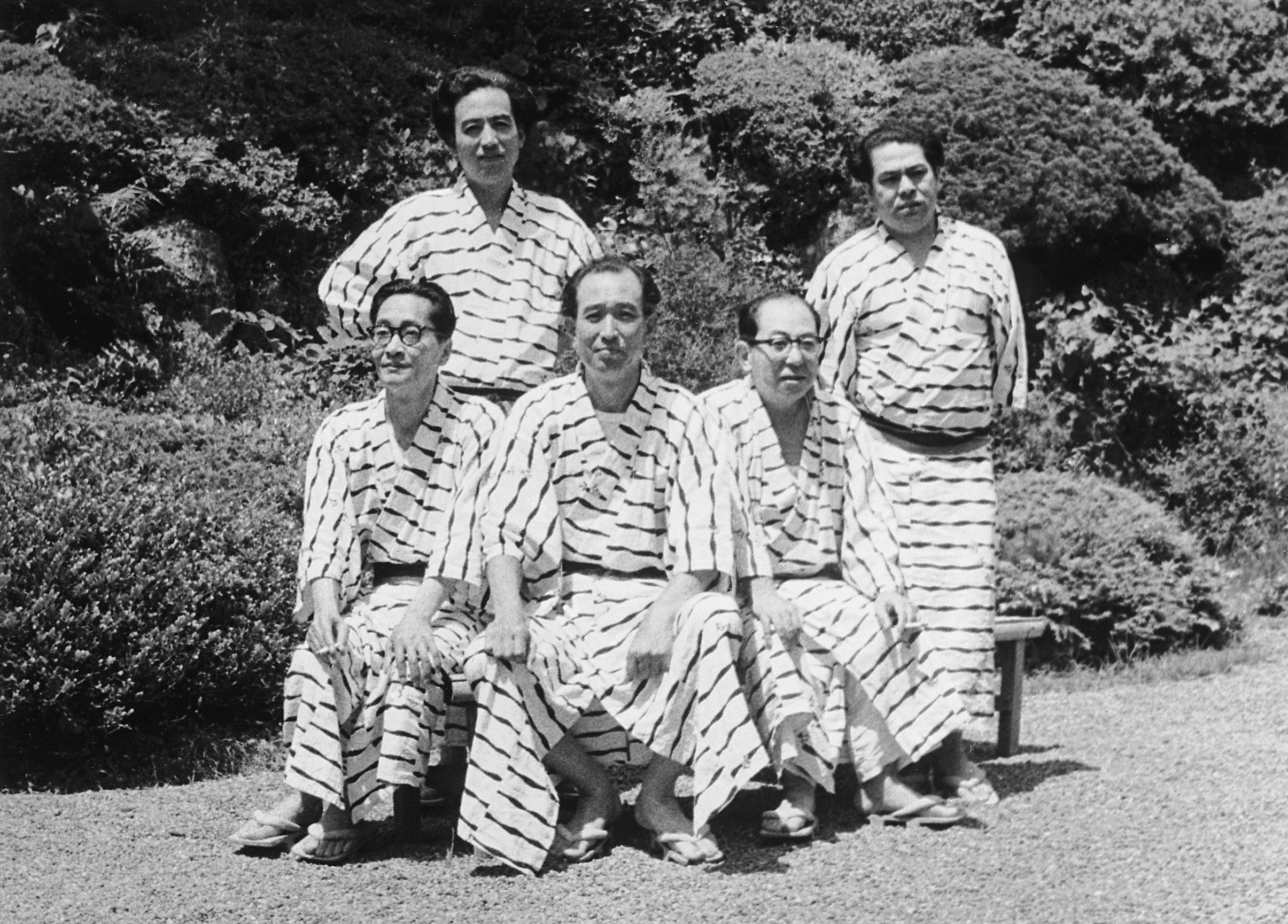
The five at Kawazuhama: (front row from left) Eijiro Hisaiti, Akira Kurosawa, Hideo Oguni (back row from left) Shinobu Hashimoto, Ryuzo Kikushima.
There is friction and animosity between the samurai and villagers, but through Kambei’s calm responses, the elder’s ministrations and mediation, and in particular the eccentric and ferocious ex-farmer Kikuchiyo’s priceless role as a catalyst, the issues are resolved one by one. Amidst days of setting up anti-cavalry fences against the mounted brigands, and the villagers dividing into squads, women and children excepted, to train in the use of bamboo spears, a fleeting love blossoms between Shino (clad in male attire and hair shorn by father Manzo on account of the samurai) and Katsushiro, counted as one of the seven—all this is the Negro spiritual of Dvořák’s New World’s second movement.
The barley ripens more every day, is cut and harvested, and the hour of battle, the brigands’ assault, draws nigh. The southern fields are ridden of their footpaths and flooded in preparation for the mounted assailants. Yet the brigands don’t appear, and an odd tension builds. One day, three scouts on horseback are seen lurking in the water god’s forest behind the settlement. When the villagers promptly report this, Kyuzo and Kikuchiyo rush to the spot and, in a flash, kill two and capture one. Interrogating the prisoner, they learn that the brigands’ stronghold is no sturdy fort but a simple thatched mountain hideout.
Hence a surprise night attack might be launched. They could set the place on fire, cut down a few, several, even ten or so who scramble out in a panic, then retreat swiftly before the counterattack. In preparation for the final battle, they need to reduce the number of assaulting brigands by as many heads as possible. A night attack on their own initiative would serve. By horse it is a half-day’s journey, so on the brigands’ three mounts and Yohei’s, Kyuzo, Kikuchiyo, and Heihachi leave the village with Rikichi as their guide.
From the point at which the party leaves the village at sunset for the surprise attack, I wrote alone.
I felt rather abandoned. Unsure. Terribly alone.
Having gotten into scenarios for the pleasure of it, I’d never once felt anxiety or pain, difficulty or suffering as regards to writing. But after one person in a collaborative work collapsed, I came to the bitter realization that writing a screenplay is akin to a battle with some invisible thing. If that makes you run out of breath or puts you over your head, all that’s left is the discouragement of defeat…
The oppressive burden on my shoulders, the solitude of fighting alone after one of us, our team leader and brother-in-arms, had fallen wounded battling something unseen, really got to me. I’d thought that for this job we’d hum and skip along throughout but now there was no telling. No, in marathon terms, we were already past the 42.195 km mark, and this was unfamiliar territory, a terra incognita that we were running through, gasping for breath. At this rate, I might also crash.
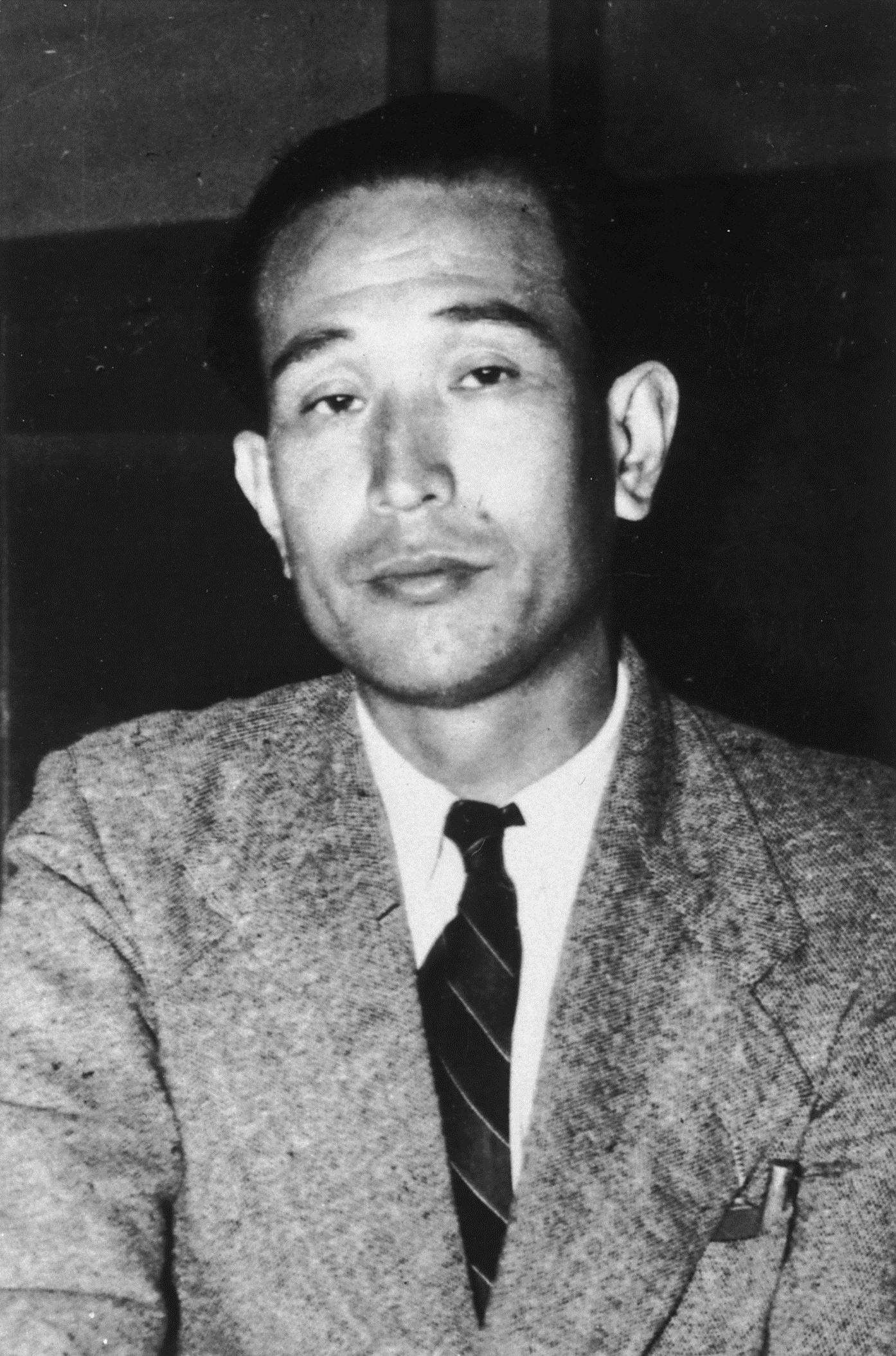
Akira Kurosawa in 1948, around the time Hashimoto first met him.
It was the third morning after his collapse. Mr. Kurosawa woke and took his bath, and when the maid cleaned the room and started to lay out his futon, he said, “No need today.” Though he had gruel for breakfast, once he finished sipping it down, he took his seat at the table, now in its usual location. I silently handed him the manuscript I’d worked on over the two days, and he read it and began revising it little by little—but his cheeks were hollow and his face pale and dreary.
Thus our work regimen returned to normal. But the rate of fifteen pages a day did not. I was exhausted too, and my unsteady pace was that of a wounded beast crawling sluggishly on the ground.
The surprise attack by Kyuzo, Kikuchiyo, and Heihachi is successful, Rikichi setting the mountain hideout on fire, ten brigands getting cut down one after the other as they come flying out in a panic. Heihachi, however, is felled by a matchlock gun blasted off by a brigand. Rikichi encounters his wife as she comes out fleeing with one of the brigands, and they lock eyes, frozen in place, but the next second his wife turns and leaps into the flames behind her.
Placing Heihachi’s corpse on the back of a horse, Kyuzo and the others return to the village. They take out his sword and plunge it into the new burial mound in the village’s east.
Kambei says to Gorobei, “You said he’d be a treasure in hard times, but the hard times are just beginning.”
Rikichi breaks down in tears, and wailing rises up from the gathered farmers.
But right away, everyone turns as one to look up the western hill at the sound of thundering hooves. Clouds of dust rise up into the air, revealing a band of brigands surveying the village—thirty-odd riders. Livid over the surprise attack of the previous night, they’ve come to kill everyone in one fell swoop.
“Wa ha ha ha!” Kikuchiyo laughs brazenly. “Guys! They’ve come! Here they are!”
At last, it’s the final battle.
From somewhere sounds The New World’s fourth movement.
I knew it, and Mr. Kurosawa knew it as well. It would be between at least 160 and 180 pages from here to the end. The first part, from the beginning to the gathering of the seven samurai, and the middle part, from their getting to the village through preparations for battle and the brigands arriving, were each 160 to 170 pages, but it was unimaginable for the last part to be shorter than the previous two. This work had three longish stages, a trio pattern, one-two-three.
Ideally, it sat better if the final battle had the same or somewhat larger page count compared to the other sections. Insofar as the gist of the film was seven samurai teaming up with villagers to do battle against brigands, the money sequence couldn’t be shorter than the first and the middle, or the film wouldn’t feel consistent. But 160 to 180 pages more from this point… It was a vertiginous amount enough to freeze my spine and send shudders through my body.
Excerpt from COMPOUND CINEMATICS: Akira Kurosawa and I by Shinobu Hashimoto
Get your copy HERE
(c) 2006 HASHIMOTO Shinobu. English language edition published by Vertical, Inc., New York, 2015. Reprinted with permission of the publisher.

Akira Kurosawa [1910-1998] during the filming of Madadayo in 1992.
